Published
- 06:00 am
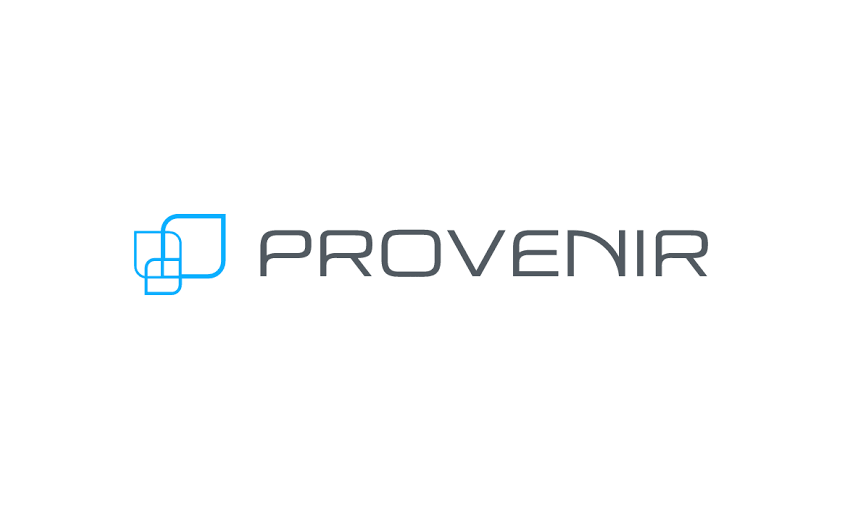
The appointment reinforces Provenir’s commitment to support financial institutions in simplifying their risk decisioning and driving innovative products to market faster
Provenir, a global leader in data analytics software and risk decisioning, has appointed José Luis Vargas-Favero as its new executive vice president and general manager for Latin America. In his new role, Vargas-Favero will be responsible for leading Provenir's ambitious expansion plans to triple its footprint in the region by the end of 2021.
Vargas-Favero brings more than 25 years of financial services experience in management, sales, business development, consulting, data analytics, decision management technology, digital transformation and risk management to Provenir. Prior to joining Provenir, he held several global senior leadership roles at FICO.
“José’s deep industry knowledge and global experience will be invaluable as we seek to become the leading trusted risk decisioning partner across Latin America,” said Larry Smith, founder and CEO of Provenir. “We see tremendous opportunity to help financial institutions in the region provide a superior and more inclusive customer experience by providing them with access to alternative types of data to assess risk and make smarter decisions.”
Latin America is producing a large and rapidly growing number of innovative and disruptive fintechs, which are raising record amounts of investment as they seize the opportunity to provide a superior and more responsive customer experience to a region with a population of more than 650 million and a combined economy of over 5 trillion USD. According to estimates, more than 70% of adults in the region have a smartphone yet only 30% have a banking relationship. Under Vargas-Favero’s leadership, Provenir will enhance its ability to support financial and non-financial institutions in providing better credit options to this unbanked population through alternative data powered technology.
“I am honored to join a company that shares my passion for using data, analytics and decisioning technology to improve the financial services landscape for all, and to contribute to eliminating financial exclusion for the vast population of underserved and unbanked individuals in the region,” said Vargas-Favero. “Provenir has distinguished itself as a global leader in risk decisioning processes with its amazing cloud-native technology, and I am excited to join at this pivotal time to help accelerate the company’s existing growth trajectory.”
The company is actively recruiting talent to expand the team in the region and is establishing alliances with local data partners to continue developing the Provenir Marketplace and better service the region.
Related News
- 05:00 am
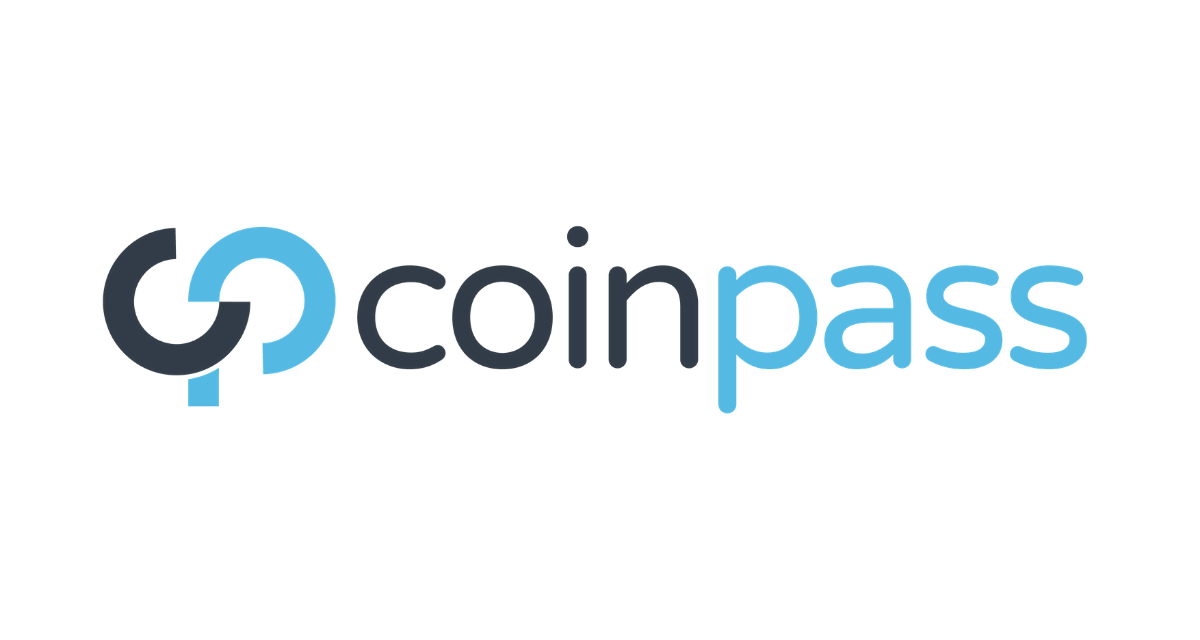
The team at coinpass are delighted to announce our approval as a registered cryptoassets firm with the UK Financial Conduct Authority.
The coinpass management team have always believed in adhering to regulating parts of the cryptocurrency eco-system that interface with the traditional world of finance. Transacting between banking and crypto on a single digital layer has been coinpass's vision since inception. Our registration with the UK Financial Conduct Authority is now in place and our vision is another step closer to reality.
Jeff Hancock, CEO of coinpass, commented: "We're exceptionally pleased to be among one of the first UK based cryptocurrency Trading Exchanges for retail investors and businesses to be fully registered with the Financial Conduct Authority as a crypto-asset firm. We understand and fully support that to evolve the cryptocurrency market to be more inclusive and attractive to a larger number of users, we would require regulatory guidelines for exchanges and gateways. The UK is a financial hub for investment and fintech and it has the potential, under the FCA's guidance, to be a world leader in cryptocurrency regulation. With this registration, I am exceptionally bullish on the future for crypto in the United Kingdom and proud of our achievement."
Previously, UK investors and traders in the cryptocurrency market were exposed to potential money laundering, loss of funds and poor customer service by using offshore unregistered exchanges to invest in cryptocurrencies such as Bitcoin and Ethereum. Many UK banks have opposed cryptocurrency transactions from client accounts due to the jurisdiction of certain exchanges or the source of funds when trying to liquidate cryptoassets holdings. The introduction of the mandatory registration by UK cryptoasset firms in adhering to Anti-Money Laundering guidelines, regulation and policies for offering cryptoasset will ensure strength and improvement in the cryptocurrency eco-system for UK investors.
Related News
- 03:00 am
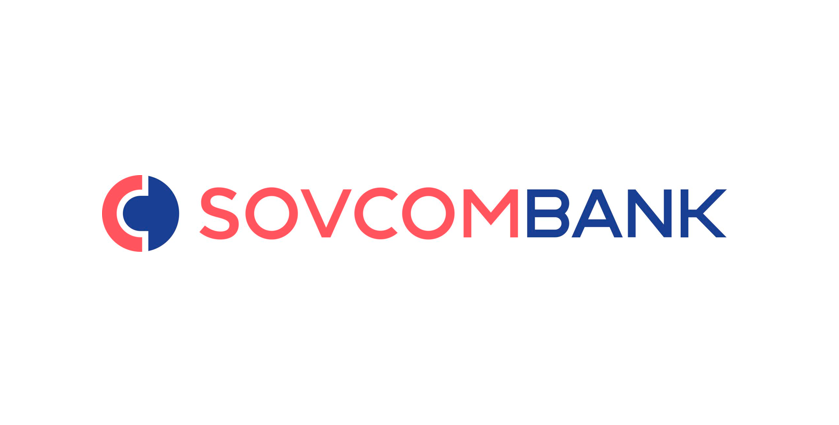
- Profit in 1H 2021 increased by 87% year-on-year to a solid RUB 24 billion. Vostochny Bank, acquired in 2Q 2021, contributed RUB 1.4 billion to Sovcombank Group’s profit.
- Net profit for the first half of the year increased by 2.7x year-on-year.
- The Bank’s assets in the first half of the year grew by 25% to RUB 1.9 trillion, both due to organic growth associated with the economic recovery following the pandemic and in connection with the purchase of Vostochny Bank.
- The Bank’s equity capital grew by 10% in 1H 2021 to RUB 207 billion.
- Return on equity (ROE) from regular business rose to 28% (up from 20% in 1H 2020).
- The retail net loan portfolio increased by 44% in 1H 2021 to RUB 429 billion, due to growth in the Halva portfolio, secured lending as well as the purchase of Vostochny Bank, whose retail portfolio amounted to RUB 75 billion as 30 June 21.
- The net portfolio in terms of corporate lending increased by 54% to RUB 533 billion.
- The bond portfolio as a share of assets decreased from 39% as of 31 December 2020 to 30% as of 30 June 2021.
- Retail customers’ current accounts and term deposits increased by 29% in 1H 2021 to RUB 609 billion, due partly to a RUB 116 billion contribution from Vostochny Bank.
- Funding from corporate customers grew by 27% from the beginning of the year to RUB 644 billion, mainly due to an inflow of corporate deposits (up 36% from 31 December 2020).
- The share of Stage 3 loans and purchased and originated credit-impaired financial assets in the gross loan portfolio before provisions decreased by 0.5 p.p. to 2.3%.
- Net interest income amounted to RUB 52 billion, up 39% year-on-year.
- Net fee and commission income grew by 33% to RUB 15 billion.
- The cost-to-income (CTI) ratio increased by 2 p.p. from the beginning of the year to 43%, mainly due to an increase in marketing and advertising expenses related to the Halva card rebranding and the incorporation of Vostochny Bank.
Information by segments:
Retail business. Over the last six months, all key retail business lines showed solid organic growth in assets and profits. The Bank’s net mortgage portfolio grew by 29% to RUB 102 billion, the net car loan portfolio grew by 13% to RUB 118 billion, and the net Halva card portfolio grew by 21% to RUB 66 billion. Once all Vostochny Bank credit cards have been converted to Halva cards, the latter’s portfolio will increase to RUB 120 billion. The share of secured loans in the gross retail loan portfolio is 55% and remains one of the highest figures among comparable top-20 banks in terms of assets. The percentage of Stage 3 loans in the retail portfolio remains low, at 4% as of 30 June 2021, with an NPL coverage ratio of 139%.
Interest income from the retail business increased by 46% year-on-year to RUB 42 billion. Retail fee and commission income grew by 14% to RUB 11 billion.
Sergey Khotimskiy, Sovcombank’s Co-owner and First Deputy Chairman of the Management Board, said: “All of our main retail business lines showed steady growth in assets and income in the first half of the year: the mortgage portfolio grew by 30%, and the Bank was one of the top three banks in the country in terms of total car loans issued in the first half of the year. Rebranding the Halva card this summer and carrying out aggressive advertising in the media will enable us to issue instalment cards at a faster rate in the second half of the year. Following the integration of Vostochny Bank’s retail business, we expect a considerable increase in the Bank’s share of the market for bank cards with limits and in the consumer lending segment.”
Corporate business. Corporate lending was once again one of the drivers of growth in the Bank’s profits and assets. The net portfolio of loans to large companies (blue chips) and to state borrowers increased by 59% in 1H 2021 to RUB 422 billion, while the volume of net loans to SMEs increased by 34% to RUB 111 billion. Interest income from the corporate business rose 25% to RUB 17 billion. Fee and commission income from the corporate business also increased by 25% in the reporting period to RUB 6 billion.
Dmitry Gusev, Chairman of Sovcombank’s Management Board, said: “The Bank remains one of the most efficient in Russia in terms of return on investment despite the growing capital base. Business diversification and the creation of a full-fledged financial group have enabled the Bank to increase its profit, which grew by a solid 87% year-on-year in 2021 despite the challenging external conditions. We see tremendous opportunities for further growth, as our market share remains below 2%.”
Highlights during the reporting period:
Purchase of Vostochny Bank. In 2Q 2021, Sovcombank completed a deal to purchase Vostochny Bank. The integration of the bank is proceeding on schedule: the transfer of Vostochny’s branch network to Sovcombank was completed by 31 August 2021. Customers reacted positively to the merger, as they gained access to all Sovcombank products and services as well as special bonuses and other opportunities.
Purchase of the National Factoring Company. On 21 July, Sovcombank completed a deal for the purchase of the National Factoring Company, one of the leaders in Russia’s factoring market and the only private player among the top 10 factoring companies. Joining the Sovcombank financial group will enable the National Factoring Company to expand its opportunities to provide high-quality factoring services for Sovcombank Group’s existing and future customers.
In May, the electronic platform RTS-Tender, a member of Sovcombank Group, completed the purchase of a 100% stake in the charter capital of JSC Economic Development Centre, the operator of the electronic platform B2B-Center, which specialises in the acquisition of commercial companies. Following the merger, RTS-Tender became the largest electronic trading platform in terms of trading volume.
Group financial results
The IFRS net profit of Sovcombank Leasing (part of Sovcombank Group) in 1H 2021 amounted to RUB 432 million, an increase of 4x year-on-year.
In 1H 2021, the insurance company Sovcombank Insurance had a net profit (according to IAS) of RUB 567 million, an increase of RUB 552 million year-on-year. Sovcombank Insurance’s assets grew by 59% to RUB 12 billion. Written premiums amounted to RUB 6 billion, an increase of 2.8x year-on-year.
The insurance company Sovcombank Life had a net profit of RUB 509 million, its assets grew to RUB 24 billion, and its insurance premiums amounted to RUB 3 billion.
Related News
- 02:00 am

Banks select Jack Henry’s Core Director with innovative, full-service digital capabilities and functionality as deciding factors
Jack Henry & Associates, Inc. is a leading provider of technology solutions and payment processing services primarily for the financial services industry. Its Jack Henry Banking® division announced today that five community banks recently selected the Core Director® core system in the first half of CY21 and are deploying it in Jack Henry’s private cloud environment. The decisions were made based on Jack Henry’s open architecture, comprehensive functionality, and added efficiencies; modern digital tools were also drivers, enabling automation and personal service at the moment of need.
The First National Bank of Peterstown, based in Peterstown, W.Va., has been serving its local community for more than 100 years. The bank’s previous core was disjointed and didn’t communicate well with other systems, creating inefficiencies and a cumbersome back-office experience. With Jack Henry’s core, the bank is gaining a tightly integrated platform that reduces the need for duplicate data entry, saving time while improving accuracy. The First National Bank of Peterstown will also launch the Banno Digital Platform™ to provide customers with a more intuitive, personal digital experience. The platform is built on open architecture, allowing the bank to more easily innovate and partner with providers of choice to meet rapidly changing market demands with increased efficiency and speed.
Jeremy Brown, president of The First National Bank of Peterstown, explained, “The past year and a half has demonstrated that investing in digital is an investment in the future, which is a key reason we chose Jack Henry. We are gaining a technology partner that offers increased efficiencies and allows us to deliver faster, fully comprehensive services to our customers, wherever and whenever they choose to bank. The Jack Henry team has given us great confidence in this partnership by going above and beyond to make our conversion successful.”
La.-based First National Bank of Jeanerette was faced with similar technology challenges; it was operating with siloed systems that didn’t effectively work with one another. The bank is implementing Jack Henry technology across the enterprise, including the core platform with digital banking and loan solutions, to streamline processes and maximize automation. The bank expects to create new efficiencies that allow them to focus on community and customer needs while reducing turnaround time for customer service and requests.
Damon Migues, president and CEO of First Nationalbank of Jeanerette, said, “We are going all-in with Jack Henry to increase efficiencies and enhance experiences enterprise-wide. We look forward to replacing tedious manual processes and systems in favor of more sophisticated technology that will allow us to save time and provide members with faster, more seamless service.”
Stacey Zengel, senior vice president of Jack Henry & Associates and president of Jack Henry Banking, said, “The community bank advantage has never been in greater demand; consumers and businesses are looking to their local, trusted institutions to help them plan their financial futures as the world stabilizes. By investing in open architecture and enterprise-wide automation that helps optimize processes, these five institutions are positioning themselves competitively against the largest banks in the country while still providing the local, personal service and support their customers need. We are proud to partner with these five institutions as they perpetuate the community bank difference.”
Related News
- 09:00 am
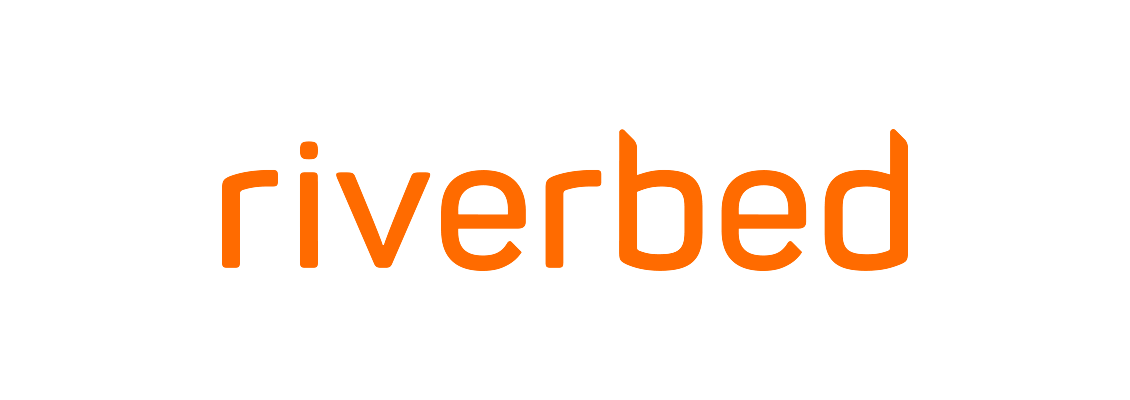
· Riverbed’s latest industry-leading NPM solution release enables NetOps and SecOps to gain improved visibility into cloud traffic flows through capture and analysis of Azure NSG flow logs and AWS VPC flow logs
· New capabilities enable organizations to improve business productivity by providing visibility and addressing unpredictable performance of cloud workloads
· As organizations continue to move workloads to multi-cloud and hybrid networks with the shift to work-from-anywhere models, this new release provides needed visibility to assist with application migration to Azure or AWS
Riverbed® today announced it added more critical cloud visibility and reporting capabilities to its industry-leading end-to-end visibility solutions – including support of Azure NSG and AWS VPC flow logs. Key updates to the Riverbed Network Performance Management (NPM) portfolio—the leading and only unified network visibility solution that collects every packet, all flows and all infrastructure metrics, 100% of the time–-delivers greater cloud visibility that is crucial to monitoring productivity and performance, as organizations continue to shift toward hybrid and multi-cloud network environments.
LinkedIn: Riverbed Unified Network Performance Management enhances network cloud visibility: https://rvbd.ly/3B6BT8S
As part of Riverbed’s Unified NPM solution, Riverbed NetProfiler enables organizations to achieve full-fidelity network flow monitoring to proactively identify and quickly troubleshoot performance and security issues. The new features introduced today improve cloud visibility by supporting native Azure NSG flow logs and augment support for AWS VPC flow logs. Riverbed automates reporting capabilities for AWS VPC flow logs to enrich information sharing. Riverbed is also introducing a modernized user interface (UI) with a new home screen and simplified search functionality, making NetProfiler easier to use and helps NetOps and SecOps users to more quickly resolve network issues.
“Today’s release of Riverbed NetProfiler is critical to NetOps and SecOps and is focused on gaining more in-depth traffic insights from Azure and AWS flow logs to proactively identify and quickly remediate performance and security issues while gaining cost and latency efficiencies. It also relieves the loss of visibility in migrating applications to Azure or AWS Cloud,” said David Winikoff, Vice President, Product Management at Riverbed. “Additionally, the new home page and search features make it easier for helpdesk and support users to solve problems, while still serving Riverbed’s traditional power users. Riverbed is delivering end-to-end visibility—across users, networks and applications—enabling organizations to modernize and secure their networks, accelerate cloud and SaaS migrations, improve business productivity and advance hybrid and work-from-anywhere environments.”
Read Blog: Riverbed NPM Enhances Cloud Visibility with Support for Azure NSG Flow Logs
Support for Azure NSG Flow Logs
The new Riverbed NetProfiler supports the ingestion of Azure NSG flow logs, the native mechanism of flow generation offered by the Azure platform. Using this Azure flow data, Riverbed NetProfiler provides two specific Azure cloud reports: Azure NSG Flow Information and Azure Billable Data Transfer.
The Azure NSG Flow Information report shows applications, hosts, and conversations by VNETs, Regions, and Availability Zones. Most importantly, it can map application relationships across the network for any service, addressing that top concern. NetProfiler’s extensive traffic reporting can also be used to study and provide reports on Azure NSG flow log AWS VPC flow logs data. The Azure Billing Data Transfer report helps organizations understand where cloud costs are occurring to make better plans and decisions to help minimize them. This report provides visibility into traffic volumes by Azure pricing policies to help organizations gain pricing and latency efficiencies.
AWS VPC Flow Log support updates
The previous release of Riverbed NPM supported AWS VPC Flow Log support, but it required organizations to manually configure and maintain AWS hostgroups to run the AWS visibility reports. With recent improvements made by AWS to AWS VPC Flow Logs, Riverbed NetProfiler now utilizes those improvements and automates hostgroups for a simpler and less error-prone process. Riverbed NetProfiler polls the AWS Management Console for the metadata and populates the corresponding AWS hostgroup definitions.
Updated Home Page UI and Search
Riverbed NetProfiler introduced new features that modernizes the UI with a new home page that provides greater insight and simplified search functionality. The new home screen helps new or infrequent users quickly understand how the network and applications are performing, what issues need attention, and how issues are trending. Organizations can easily search or contextually drill deeper into the data. The at-a-glance performance summaries can be customized on a per-user basis. The updated version allows organizations to toggle between last hour, last day or last week timeframes, and this insight loads quickly ensuring fast responsiveness to performance queries.
Improved security
Riverbed NetProfiler now supports the Transport Layer Security (TLS) Protocol 1.3 for its services, including syslogs. Out of the box, new systems are now installed with a minimum of TLS 1.2 and 2048-bit cipher certificates. TLS allows client/server applications to communicate over the Internet in a way that is designed to prevent eavesdropping, tampering and message forgery.
To try a free 30-day trial of Riverbed NetProfiler, please visit: https://www.riverbed.com/forms/trial-downloads/netprofiler-30-day-trial.html
Related News
- 01:00 am
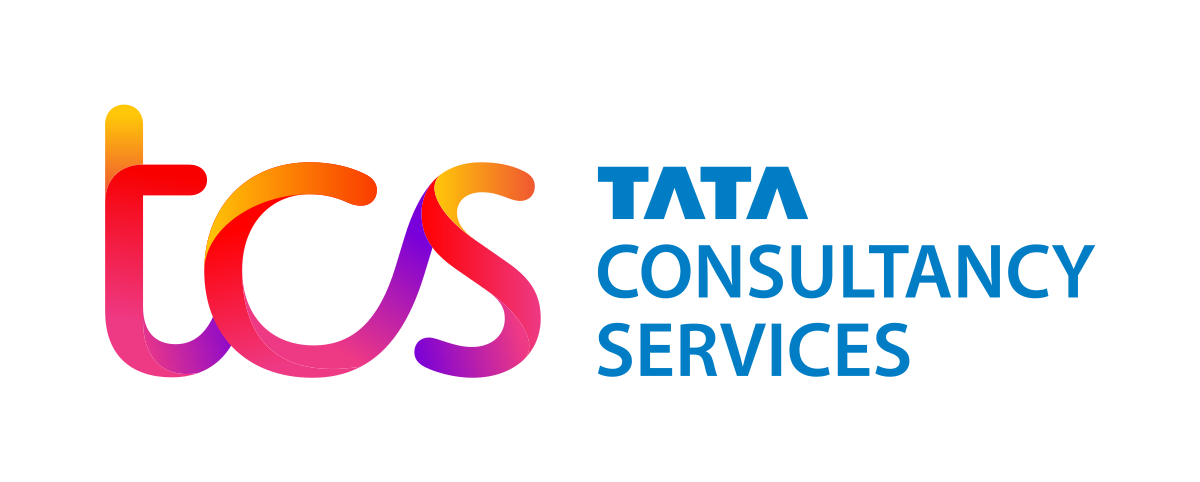
Tata Consultancy Services’ 2021 Global Leadership Study Examines How Top Leaders of Large Global Enterprises Have Recalibrated their Organisational Strategies for the More Digital Decade Ahead
Tata Consultancy Services (TCS), a leading global IT services, consulting, and business solutions organisation, published its global study titled ‘Where, How and What Leaders Will Compete With in the New Decade: Findings from the TCS 2021 Global Leadership Study’, based on a survey of 1,200 CEOs and senior executives. The study reveals a sharp divide in the digital strategies of better performing companies (Leaders) versus the laggards (Followers), including unexpected insights such as: 80% of Leaders are more willing to collaborate with competitors compared to Followers (23%).
Brought out by the TCS Thought Leadership Institute—which conducts primary research to help organisations transform for long-term, sustainable growth—the study examines how large global enterprises have recalibrated their competitive strategies through 2025, following the pandemic. Specifically, it explores how management teams across the world are striking a balance between innovation and optimisation in four areas—digital strategies, digital offerings, digital ways of conducting business, and leadership approaches.
“Senior executives are always challenged to lead their organisations forward to be more competitive, and increasing digitisation only accelerates that momentum,” said Krishnan Ramanujam, Business Group Head, Business & Technology Services, TCS. “This study captures the pulse of global business leaders and their nearly ubiquitous belief that massive digital opportunities abound in the next five years—and their company culture must embrace an innovation mindset. At TCS we use our 3-Horizon Purpose-Led Transformation framework to help organisations embrace innovation in a way that helps them compete more effectively.”
Key findings of the study include:
- Innovation was ranked as the most important aspect of organisation culture, followed by Diversity, Inclusion and Equal Opportunity (#2), Quality Orientation (#3), and Customer-Centricity (#4).
- Leaders ranked Customer-Centricity as the top cultural priority, above Shareholder Value, while Followers ranked it number 6, indicating that higher-performing companies embed a ‘customer first’ mindset across the organisation.
- Leaders ranked Customer-Centricity as the top cultural priority, above Shareholder Value, while Followers ranked it number 6, indicating that higher-performing companies embed a ‘customer first’ mindset across the organisation.
- By 2025, respondents believe 41% of their revenue will come from new offerings. Within that, Leaders expect 44% revenue from new offerings, while Followers expect 40%.
- The respondents projected that by 2025, 46% of their revenue will come from purely digital products or services. Leaders expect it to be even higher – 56%.
- When asked where they need to more effectively use data, respondents ranked Digital Marketing Campaigns first, followed by Sales Initiatives and Customer Service, suggesting that their companies need to improve the way customer data is used to create demand and improve customer experience.
The report also offers data-based recommendations to help shape the strategy of forward-thinking executives on how to take their organisations to higher performance.
TCS’ 2021 Global Leadership Study surveyed more than 1,200 CEOs and senior executives from a range of industries including (but not limited to) retail, manufacturing, insurance, banking and financial, healthcare and more, from four regions across the globe—North America (US, Canada); UK, Europe (Germany, Netherlands, France); APAC (India, Singapore, China, Australia, New Zealand, Japan); and LATAM (Colombia, Brazil, Mexico). Respondents’ companies had annual revenues over $1B, with an average revenue of $14B.
To view the full report and receive more information, visit www.tcs.com/perspectives/ceo
Related News
- 02:00 am
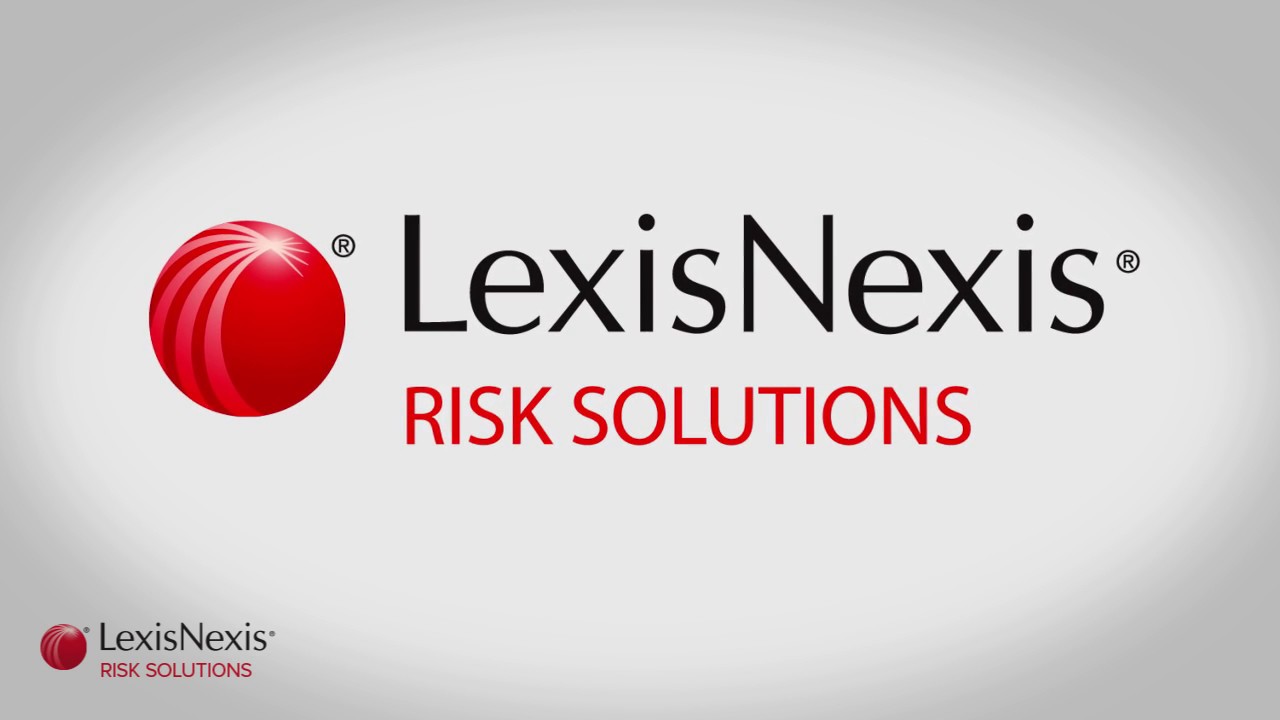
Latest Survey from Accuity, a LexisNexis® Risk Solutions Company, Reveals Contrasts in How Global Banks, Corporations and Non-Banking Financial Institutions Manage Trade and Export Compliance
Two-thirds of banks, corporations and non-banking financial institutions (NBFIs) still use search engines to comply with trade and export compliance regulations, according to Accuity, a LexisNexis® Risk Solutions company and a leading global provider of financial crime screening, payment services and know your customer (KYC) solutions. Performing due diligence in this manner leaves organisations open to missing red flags and making misinformed decisions over whether to accept business. This can expose them to risk and potential regulatory action and may also result in missed opportunities to participate in safe and legitimate trade transactions.
Trade finance providers, as well as insurers, logistics firms and others involved in international supply chains are responsible for conducting due diligence on the parties and items involved in the transactions and shipments they facilitate. This includes verifying the legitimacy of the customer and all parties to the transaction, checking for dual-use or controlled goods (for example, those that could have a military purpose) and ensuring funds and goods are not going to or coming from a sanctioned location.
The trade compliance survey – conducted by Accuity during the first half of 2021 – questioned more than 120 professionals from leading banks, insurance and fintech organisations operating in APAC, EMEA and the Americas. The study shows how widespread manual search remains even years after the emergence of automated solutions to detect trade compliance risks, such as sanctioned entities and dual-use goods.
Key findings from the research:
- Trade compliance is not always handled by a dedicated team: Banks are managing trade compliance mostly through a dedicated compliance function. Non-banking financial institutions (NBFIs) are handling it as part of the KYC process and corporations as part of a central compliance function or general operational team.
- Multi-variable screening is mostly limited to banks: More than 90% of banks screen for five or more data points, including sanctions, goods, vessel names and ultimate beneficial owners (UBOs), compared to only a third of non-banks.
- Challenges posed by changing regulation: The biggest challenges for banks and corporations are keeping up with rapidly changing regulations and increasing expectations, while NBFIs find document-heavy processes the biggest burden.
- Efficiency gains planned: Sixty percent of firms revealed that they plan to invest in the integration/interconnectivity of systems, with 74% looking to improve data sharing and transparency.
- Compliance as an advantage: Competitive advantage is seen as the main benefit of trade compliance. Corporations reported less concern over fines, while prioritising improving the flow of business through smarter licence management.
Accuity customer Enas Hamed, Sanctions Unit Head at the Housing Bank for Trade and Finance in Jordan, said, “We have prioritised digitising and automating our process for screening trade finance transactions against local and international sanctions lists. In doing so, the bank increases its efficiency levels by cutting down on time spent processing and screening potential transactions manually, while simultaneously allowing for a clear audit trail and increased effectiveness in its dealings with both regulatory bodies and its customers.”
Aneta Klosek, director, trade compliance, at Accuity said, “Trade compliance is a critical function where mistakes can cost businesses millions. An area where the smallest omission can throw off the entire strategy of a business is no place to take a chance. On the other hand, the study has shown that getting trade compliance right can produce a significant competitive advantage, so there is every reason for firms across the breadth of the supply chain to make this a focus. We are seeing more banks and other organisations turn to comprehensive data and technology-enabled solutions to ensure their compliance framework is absolutely watertight – and they have flourished throughout the pandemic as a result.”
Download the infographic, How Companies are Tackling Trade Compliance, to view the full survey results. To learn more about the issues surrounding trade and export compliance, read the new Accuity whitepaper, Trade, Trafficking and Technology: The Ongoing Fight Against Financial Crime.
Related News
- 05:00 am

BabelFish, the leading stablecoin aggregator on Rootstock, has completed a successful fundrise totalling $5.8m via a listing on Sovryn’s Origins launchpad, the first organisation to do so. Funds raised will be used to enable BabelFish users to vote on protocol upgrades, reward the community for work completed, and conduct general research and development to sustainably increase AUM and integrations.
Sovryn Origins is where new projects are able to expand their communities, and raise funds to build the economic, financial ecosystem around Bitcoin. Unlike other launchpads, Sovryn Origins is driven by the Sovryn community, which vets all projects and where funding can be sourced in native BTC. Sovryn itself used the Origins launchpad to raise $10m in a token presale in March 2021.
BabelFish aims to solve the significant problem of stablecoin liquidity fragmentation by aggregating and standardizing stablecoins across chains in order to evolve into the ultimate stablecoin translator across the DeFi space. This listing follows months of cooperation between Sovryn and BabelFish, which launched the alpha version of XUSD atop Sovryn in the first week of June to prove the value of a simplified UI and deep USD liquidity. XUSD stablecoins have proved easy to aggregate and distribute, which has rapidly made XUSD the most liquid stablecoin on the RSK network. Consequently, the FISH token and XUSD are already added by default in the Liquality and Defiant wallet and will soon be available on other Rootstock projects.
BabelFish has adopted a fork of Sovryn’s bitocracy, which uses quadratic voting for better governance as part of its decentralized autonomous organisation (DAO) structure, where parameters of the protocol are voted on by FISH token holders. Babelfish’s FISH tokens will also be available for purchase on Sovryn’s exchange, or earned as rewards for contributing to the project’s development.
Bitcoin is the most secure and scalable blockchain, focused on fundamentals and simply designed to secure Bitcoin transactions. The Sovryn protocol extends the functionality of Bitcoin by using the same proof of work, it is mined and secured by Bitcoin and the transactions on the Sovryn system are paid in Bitcoin fees to Bitcoin miners to extend that security. The protocol achieves scale by adding additional layers of technology on to Bitcoin’s simple, basic blockchain, unlike building on Ethereum where modifications to the base layer increase complexity and cost.
A BabelFish spokesperson said: "We want to thank the Sovryn community for embracing the XUSD proof of concept early on, and for helping BabelFish successfully launch FISH as the first project in the Origins launchpad. This is the beginning of a long journey, and through the DAO everyone will be able to participate in shaping the direction of the protocol to enhance multi-chain stablecoin flow and contribute to Bitcoin’s adoption.”
Edan Yago, core contributor at Sovryn, commented: “BabelFish and Sovryn share a vision of a financial and monetary system based on Bitcoin and the support we have seen for this sale has proven the traction we are seeing with that vision, in our communities and beyond. We are excited to see the proposals and the votes to improve the protocol and get us closer to both projects shared goal of accelerating hyperbitcoinization.”
Related News
- 02:00 am

Google Cloud and C3 AI partner to provide industry solutions that will address real-world challenges in financial services, healthcare, manufacturing, supply chain, and telecommunications
C3 AI and Google Cloud today announced a new, first-of-its-kind partnership to help organizations across multiple industries accelerate their application of artificial intelligence (AI) solutions. Under the agreement, both companies’ global sales teams will co-sell C3 AI’s enterprise AI applications, running on Google Cloud.
The entire portfolio of C3 AI’s Enterprise AI applications, including industry-specific AI Applications, C3 AI Suite®, C3 AI CRM, and C3 AI Ex Machina, are now available on Google Cloud’s global, secure, and low-latency infrastructure, enabling customers to run C3 AI on the industry’s cleanest cloud.
Going forward, C3 AI will also work closely with Google Cloud to ensure that its applications fully leverage the accuracy and scale of multiple Google Cloud products and capabilities, including Google Kubernetes Engine, Google BigQuery, and Vertex AI, helping customers build and deploy ML models more quickly and effectively.
C3 AI’s enterprise AI applications, built on a common foundation of Google Cloud’s infrastructure, AI, machine learning (ML) and data analytics capabilities, will complement and interoperate with Google Cloud’s portfolio of existing and future industry solutions. Customers will be able to deploy combined offerings to solve industry challenges in several verticals, including:
- Manufacturing: Solutions to improve reliability of assets and fleets with AI-powered predictive maintenance, improve revenue and product forecasting accuracy, and improve the sustainability of manufacturing facilities and operations through optimized energy management.
- Supply Chain & Logistics: Solutions to help supply-chain reliant businesses understand risks in their supply networks, maximize resilience, and optimize inventory accordingly.
- Financial Services: Solutions to assist financial services institutions in modernizing their cash management offerings, improve lending processes, and reduce customer churn.
- Healthcare: Solutions to improve the availability of critical healthcare equipment via AI-powered asset readiness and preventative maintenance.
- Telecommunications: Solutions to improve network resiliency and overall customer experience, while reducing costs and the carbon footprint of operations.
“Combining the innovation, leadership, scale, and go-to-market expertise of Google Cloud with the substantial business value delivered from C3 AI applications, this partnership will dramatically accelerate the adoption of Enterprise AI applications across all industry segments,” said Thomas M. Siebel, C3.ai CEO.
“Google Cloud and C3 AI share the vision that artificial intelligence can help businesses address real-world challenges and opportunities across multiple industries,” said Thomas Kurian, CEO at Google Cloud. “We believe that by delivering C3 AI’s applications on Google Cloud, and by partnering to address specific industry use cases with AI, we can help customers benefit more quickly and at greater scale.”
“Organizations across industries are accelerating their digital transformations with cloud-based solutions, purpose-built to deliver specific business outcomes,” said Ritu Jyoti, group vice president, AI and Automation Research at IDC. “This new partnership between C3 AI and Google Cloud represents an acceleration of this trend, as the two companies partner to expand the application of AI-powered solutions in the enterprise.”
“This is fundamentally game-changing for the hyperscale computing market,” said Jim Snabe, former co-CEO, SAP AG. “Google Cloud is changing the competitive discussion from CPU seconds and gigabyte-hours, to enterprise AI applications producing enormous value for customers, shareholders, and society at large.”
Additional resources
Related News
- 01:00 am
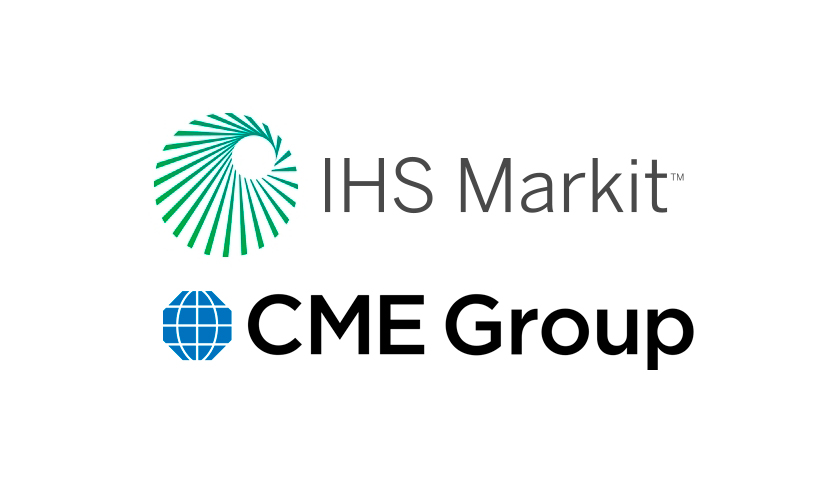
CME Group, the world's leading and most diverse derivatives marketplace, and IHS Markit, a world leader in critical information, analytics, and solutions, today announced they have launched their joint venture, OSTTRA, a new post-trade services company.
OSTTRA, 50/50 owned by CME Group and IHS Markit, is a leading provider of progressive post-trade solutions for the global OTC markets across interest rate, FX, equity and credit asset classes. It incorporates CME Group’s optimization businesses –Traiana, TriOptima, and Reset – and IHS Markit’s MarkitSERV. Headquartered in London, OSTTRA will be led by Co-CEOs Guy Rowcliffe and John Stewart.
Rowcliffe will serve as Co-CEO and Chief Commercial Officer, with oversight for leading the company’s full product portfolio and sales teams. Most recently, Rowcliffe was Global Head of Optimization Services at CME Group and Head of TriOptima and Reset. Previously, he was Head of Asia Pacific for NEX Group's post-trade and optimization businesses.
Stewart will serve as Co-CEO and Chief Operating Officer responsible for leading business strategy, operations and technology as well overseeing corporate services and finance. He has extensive experience in institutional and investment banking including serving as global head of investment banking operations and chief data officer at UBS, and in various operations and technology roles in derivatives and securities businesses at J.P. Morgan.
“These complementary businesses provide clients with enhanced platforms and services for global OTC markets,” said Terry Duffy, CME Group Chairman and Chief Executive Officer. “The combined force of the product suite ensures a streamlined post-trade ecosystem that will help clients drive even greater efficiencies. As the demands for automation continue to transform the post-trade landscape, OSTTRA will be at the forefront of helping market participants build a secure and sustainable market infrastructure.”
“OSTTRA brings together the people, processes and networks to solve the market’s most pressing problems through innovating, integrating and optimizing the post-trade workflow,” added Lance Uggla, Chairman and CEO of IHS Markit. “John, Guy and the team have the experience and vision to meet the increasingly complex post-trade challenges of today and address the operational needs of the future.”
The terms of the deal included a $113 million equalization payment from IHS Markit to CME Group to achieve 50/50 ownership and shared control in the joint venture. Further financial terms were not disclosed.
For more information on the products and services provided by OSTTRA please visit www.osttra.com.









